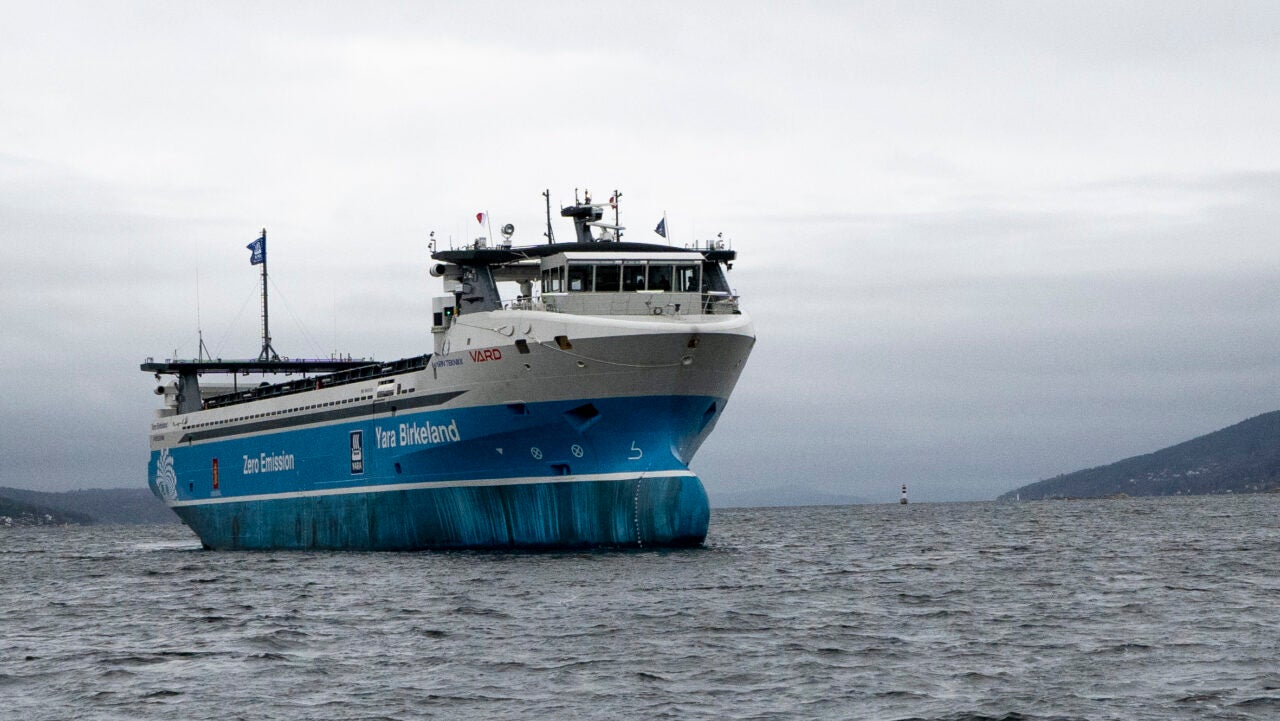
The Future of Autonomous Electric Cargo Ships
The world’s first fully electric, completely autonomous cargo ship has successfully completed its maiden voyage in Norway, but fear not, it’s a far cry from the dramatic movie depictions of ‘ghost ships’. Frankie Youd profiles the vessel and highlights the benefits of this new technology.
The shipping industry has been pioneering new technology, ship design, and fuel types to set sail towards a greener future for shipping. Now, Norwegian chemical company Yara, has gone one step further by not only producing a zero-emission vessel, but one that is zero crew as well.
Giving us a sneak peek into the future of cleaner, greener, autonomous travel, the world’s first autonomous, fully-electric cargo ship – named Yara Birkeland – has set sail.
The vessel, stretching 80m, with a deadweight of approximately 3,200 tonnes, contains sensors and computers that allow the vessel to operate autonomously or via remote control.
The vessel is also doing its part for the environment, due to zero emissions being produced thanks to the electrical propulsion and battery system.
How does it work?
Departing for its maiden voyage on Thursday 18 November, the Yara Birkeland set sail on her first demo trip, sailing along the Norwegian coast from Horten to Oslo. Estimated to cut 1,000 tonnes of CO2 and replace 40,000 trips carried out by diesel trucks per year, Yara is optimistic that commercial operations for the vessel will take place within the next few years.
The ship is powered by battery powered technology – provided by Swiss Lithium-ion cells and energy storage solutions company, LeClanchè – providing the ship with a capacity close to 7MWh. This is accompanied by sensor technology that provides the vessel with situational awareness.
The sensors come in the form of radar, infrared cameras, and automotive integrated solutions cameras. Combined, these give the ship the ability to discover obstacles in its path and avoid them.
The vessel has also been fitted with automatic mooring arms from MacGregor to allow for unmanned docking and mooring at quays.
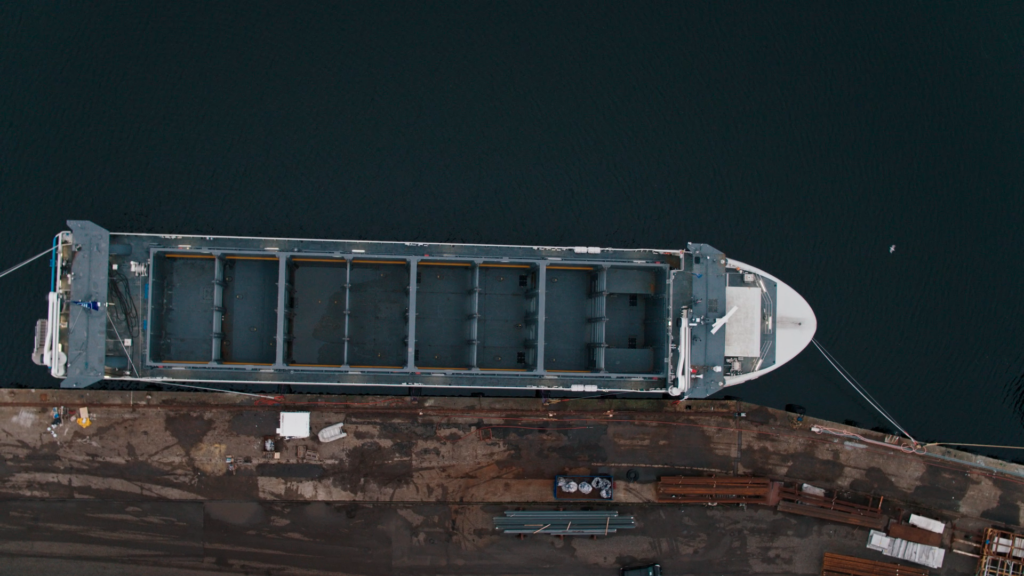
Additionally, cloud solutions are also being used on the vessel and have been designed to provide the remote operation centre on the shore with data from the voyage and operation.
Although the inclusion of this technology will allow the vessel to be remotely controlled from the shore, this is not the intention of its integration. The system has been designed so that the vessel is able to carry out the voyage itself without human intervention, with remote takeover only being needed should an event requiring human aid occur.
Speaking on the creation of the vessel, Jostein Braaten, project lead of the Yara Birkeland says: “Yara is constantly seeking opportunities to improve not only the business but also safety and our environmental footprint. By introducing Yara Birkeland, Yara wants to show a dedication to improving the environmental impact from this transport of goods.
“With the production plant in Porsgrunn, Norway, located by the sea and with close to 100% of the products to be exported by ship it seemed inconvenient to transport, what is delivered in containers, the first distance from the plant to the shipping port, by trucks. An opportunity to improve both the logistics and to reduce the traffic on local roads by establishing an electrically driven sea-going vessel seemed like an opportunity.”
Further to the vessel carrying out its maiden voyage, the company has also undergone sea-trials that saw containers being delivered, loaded, and shipped via the ship.
The company has also tested the navigational capabilities, such as auto-docking and auto-crossing using the technology same technology in place on the Yara Birkeland on a double ended ferry in regular traffic crossing the Oslofjord.
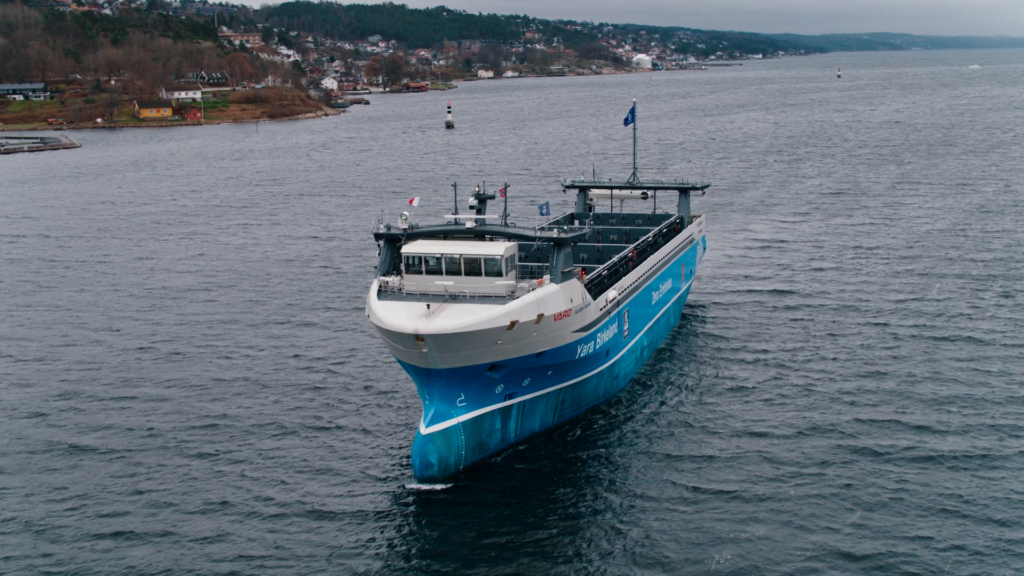
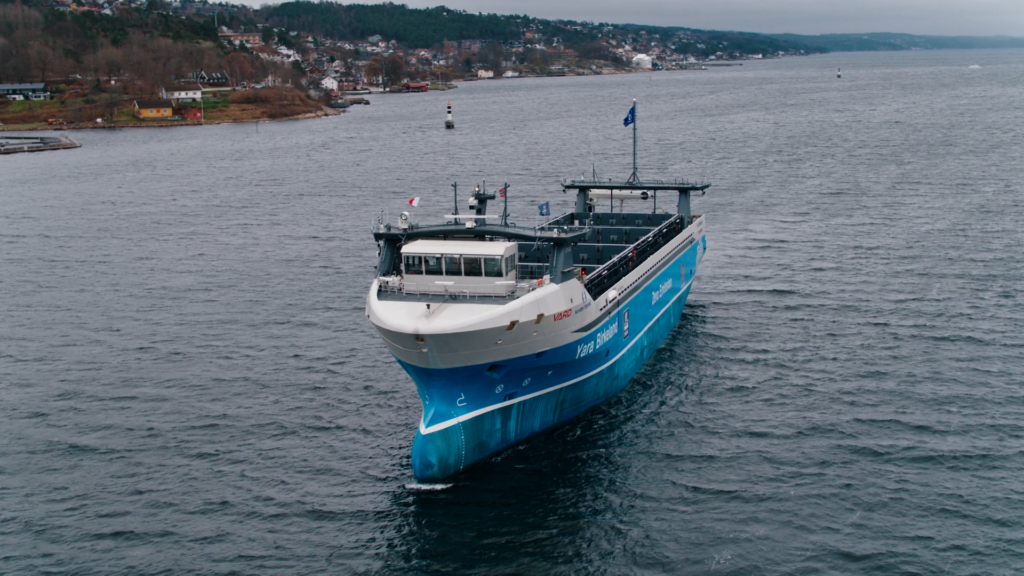
The company hopes that the regular operation of Yara Birkeland will begin in early Q2 this year, which will also start the test-period for the technology to become fully certified. With testing believed to take two years, the company has big goals between then and now.
“We will spend the next years collecting and analysing data from the operation to learn and train the algorithm to perform as efficiently as possible,” Braaten says.
“Simulator testing provides us with solid evidence of the system performance but getting live data from the actual voyages and operation area, such as currents, traffic, and behaviour of the surroundings is of great value to the further development towards autonomy.”
No crew, no problem.
One of the key elements that sets the Yara Birkeland apart from the rest is the full autonomy of the vessel – meaning that no crew is needed onboard. The full autonomous nature of the ship brings with it many benefits, such as reduced staffing costs, – although some will still be needed for the remote-control centre – as well as having more space for cargo on deck.
Paired with this, autonomous shipping also improves safety for the overall voyage due to a large majority of maritime accidents occurring due to human error. The inclusion of computer systems on the vessel could prove to be significantly safer compared to crew navigating.
Braaten comments: “Generally for autonomous ships safety is improves as sea-men are not subjected to danger at sea, but also reduced incidents related to people-fatigue or other human error.”
On the other hand, the autonomous tech can also result is some new challenges – such as the threat of cyberattacks, which if a vessel fell victim to, could see the loss of control and takeover of the vessel. Further to this, due to the technology being in its early stages of development, there are a limited number of regulations – meaning that at present these vessels are only capable of coastal and river routes instead of large ocean crossings.
A crewless vessel brings with it many benefits to the maritime sector and with interest in this technology growing, it seems that they have a significant role to play for the future of the industry.
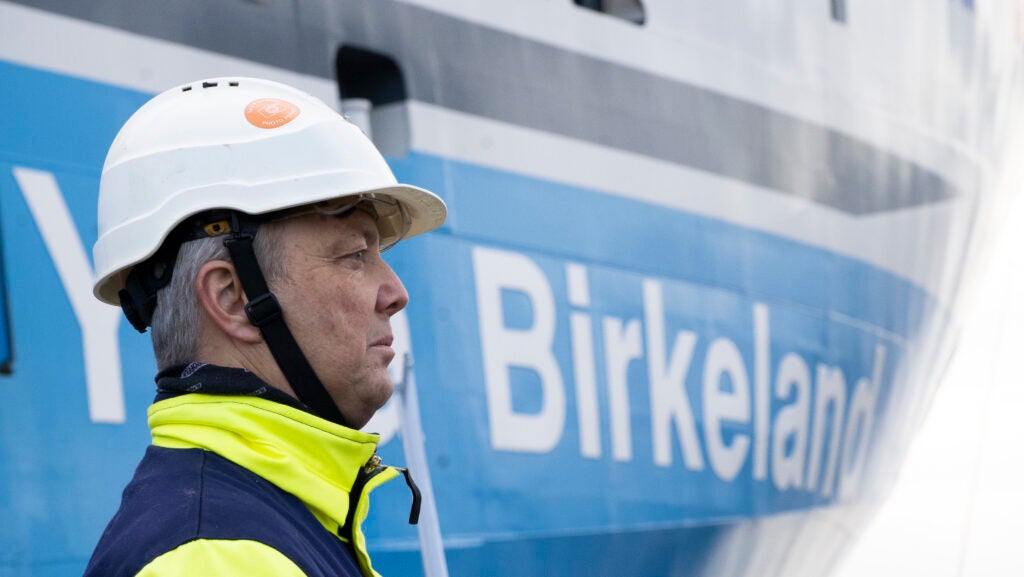
“For selected purposes, autonomy can clearly provide improved economy, safety, regularity, and efficiency – for example, at harbour control. It can also improve the competitiveness for shipping compared to road transport in short-distance routes. Unmanned maritime operations can also be a great alternative to alleviate the situation with a shortage of truck drivers and congested cities.” Braaten says.
“We see that autonomy in maritime has really picked up the pace after the news of Yara Birkeland were released. It is no longer a question of “if” autonomy is coming, it is a matter of “when”. Autonomy is an enabler and a potential catalyst for the green shift in maritime. We are delighted to be leading this shift and see that by realizing this concept – others are following.” Braaten concludes.



